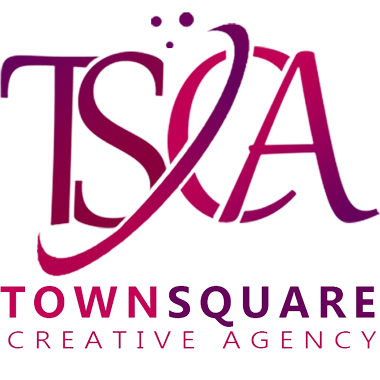The secret to bringing down your ad cost lies in choosing a suitable ad bidding type and implementing the right strategy to adjust bids. If you make the right moves, it can boost your campaign performance and increase conversions.
Think of it as baking a cake. You must have the ingredients, quantity, mix and baking temperature right to get the desired outcome. A slight miscalculation can alter the taste or make it inedible.
Depending on your campaign goal, Google ads give you many ways to bid for your ad. Some advertisers focus on getting more clicks or impressions while others seek more views or conversions.
For example, if you want more people to visit your site, you should focus on getting more clicks on your ad. However, if your target is to spread brand awareness, you should bid for more impressions instead of clicks.
But this is just the tip of the iceberg. With Google offering a multitude of bidding options, it can become quite a task to decide which bidding strategy works best for your ad campaigns. In this post, you’ll learn some of the best Google ads bidding strategies to follow in 2022.
- Target Cost Per Acquisition
Target Cost Per Acquisition (CPA) is a bidding strategy best suited for optimizing conversions. It is the amount you are willing to spend to acquire one customer. If the conversion is your primary goal of a campaign, choosing Target CPA bidding will help you try to convert users at a specific acquisition cost.
If you choose this approach, Google Ads will automatically set your bids on each campaign based on the CPA. The conversion cost can be more or less to align with your acquisition costs.
- Target Return on Ad Spend (ROAS)
Target ROAS is a bidding strategy where Google Ads will set your bids to maximize conversion value based on the return you want to target from your ad spend. ROAS is a percentage-based value calculated as:
Sales/ Ad Spend X 100%= Target ROAS - Maximize Conversions
Maximize conversions is a simple bidding strategy that Google Ads offers. Depending on the daily budget you set, Google will automatically run the bidding for you to get you the maximum conversion for the money spent. Remember to check your ROI at the end of the campaign to see if maximizing conversions leads to profitable sales. - Maximize Conversion Value
Maximize Conversion Value is a fairly new bidding strategy introduced by Google Ads. It works like ROAS, except you don’t have to set a target ROI and let the algorithm maximize your ad spend to the best of its ability. - Enhanced Cost Per Click (ECPC)
Enhanced Cost Per Click is a unique blend of manual and smart bidding. You can set the basic CPC for your keywords and ad groups and get the algorithm to optimize them. Google can increase or decrease your bid amount based on the potential of driving sales. Bids will try to average out at your maximum CPC settings.
If a search is very competitive and the CPCs are extremely high, Google may lower your bid to cost less due to less chance of converting. This bidding is available both on Search and Display networks.
- Maximize Clicks
Maximize clicks is an automatic bidding strategy based on your max daily budget. In this bidding strategy, Google will try driving as many clicks as possible with your daily budget. This strategy isn’t ideal for driving sales or conversions as it doesn’t consider the traffic quality or relevance.
Therefore, Maximize Clicks works best when you have a limited budget or limited keyword search volume for your campaigns.
- Manual CPC Bidding
If you want more control over your bidding strategy, manual CPC bidding might be the right one for you. However, it also means that you must spend more time monitoring costs and adjusting them, which is tricky if you aren’t well versed with Google Ads.
In manual CPC, you set bids for different ad groups or keywords on your own. You can adjust budgets by removing or adding money from campaigns depending on whether a search term is more profitable than others.
- Cost Per Thousand Impressions (CPM)
Cost Per Thousand Impressions (CPM) is a bidding strategy based on impressions and applies to display networks and YouTube ads only. CPM cannot be a bidding strategy for Google search network ads. - Cost Per Thousand Viewable Impressions (vCPM)
vCPM is a manual bidding strategy best suited for brand awareness campaigns. Just like CPM, this one is also reserved for Display Network and YouTube Ads. You set your maximum costs in this bidding type on a viewable 1000 impressions.
A viewable impression is considered after a video is played on YouTube for 2 seconds or a display ad is shown for 1 second on the Display Network.
- Cost Per View Bidding (CPV)
Cost Per View Bidding (CPV) is only meant for video advertising on Google Ads or YouTube ads. You pay for views or interactions on your video with CPV bidding. YouTube interactions may include CTA clicks, cards, companion banners or overlay clicks.
A view is determined by the duration someone watches your ad. A view is counted when someone watches your ad for at least 30 seconds or the full ad when it is less than 30 seconds or whenever they interact with your ad.
- Target Impression Share Bidding
Target Impression Share is a bidding strategy introduced by Google in 2018. The strategy is centered around improving brand awareness and helping you reach maximum people. Target Impression Share is mainly used for your branded search campaigns and a limited number of key search terms for your brand. - Target Cost Per Thousand Impressions (tCPM)
Using this bidding strategy, you can set how much you want to pay on average per thousand views on your video ad. It is an automated strategy where Google adjusts your bid to optimize how many impressions your ad receives. Some impressions may cost more or less than your target cost; however, Google will try to keep your average at or below the target. - Portfolio Bidding
Portfolio bidding combines smart bidding, CPC and visibility bidding strategies. Using this strategy, you can group multiple campaigns, ad groups, and keywords based on your marketing goals. You can store, manage and track Portfolio bids in your shared library.
If you are a Google Ads expert, you must have used many of the above Google ads bidding strategies in your campaigns. Do you favor manual or automated bidding? Which bidding strategy do you think is more effective for your business? Let us know in the comments.


